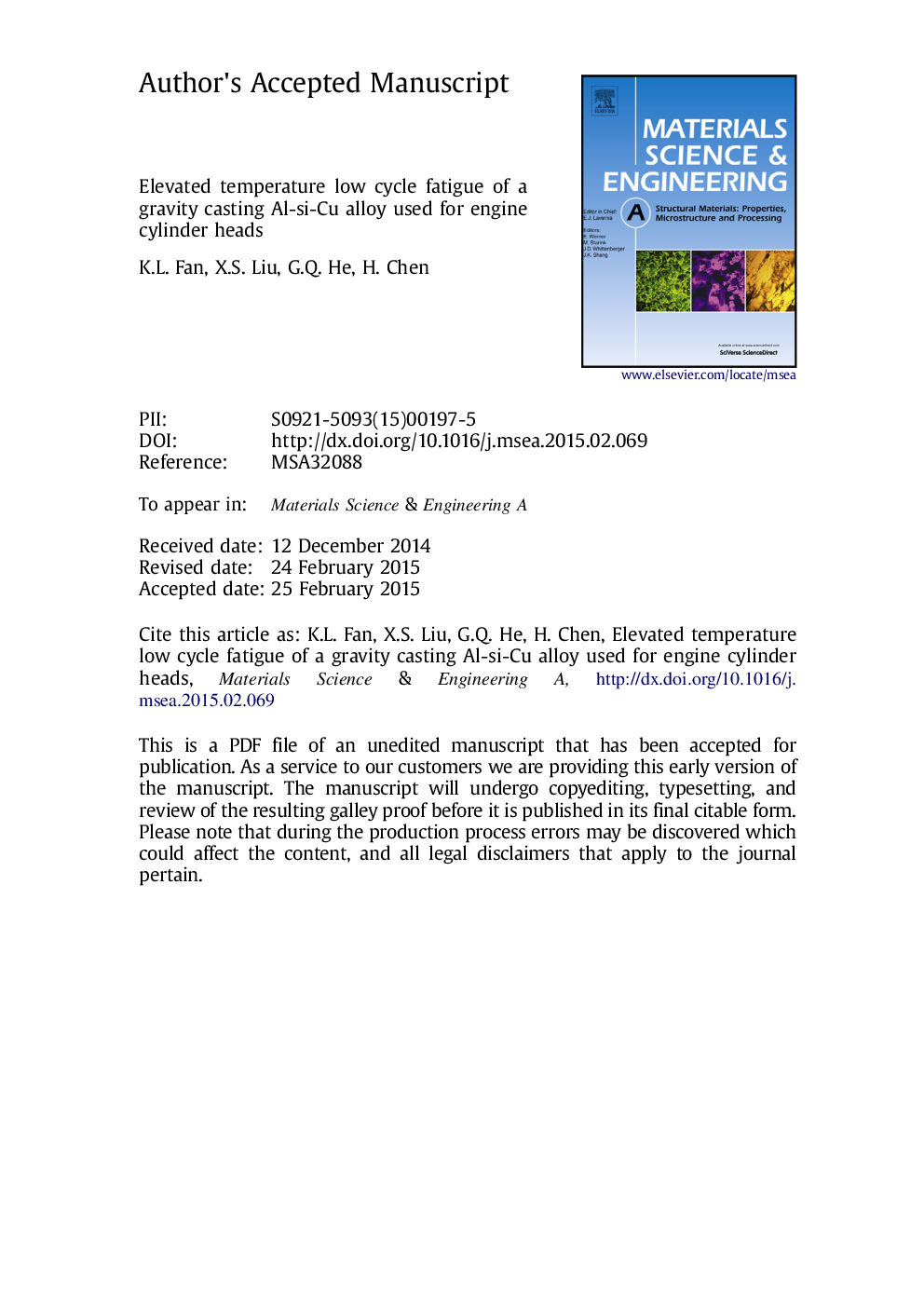| Article ID | Journal | Published Year | Pages | File Type |
|---|---|---|---|---|
| 1574358 | Materials Science and Engineering: A | 2015 | 30 Pages |
Abstract
The strain controlled low cycle fatigue behavior (LCF) of a gravity casting (GC) Al-9Si-3Cu (333) alloy for engine cylinder heads was investigated at 423 and 523Â K. Detailed studies were performed on cyclic hardening/softening behavior, hysteresis loops, fatigue lifetime, and fracture modes, as well as dislocation structures during cyclic straining. At any given total strain amplitude (from 0.20% to 0.275%), the material exhibited cyclic hardening at 423Â K and cyclic softening at 523Â K, which also corresponded well to the observed phenomena in hysteresis loops. Meanwhile, under the same total strain amplitude, the hysteresis loop at the half of lifetime at 523Â K was wider than that at 423Â K. The cyclic hardening characteristics observed at 423Â K at the selective total strain amplitudes (0.20% and 0.275%) were mainly attributed to the tangled dislocation structures, along with the interaction of dislocation with second phase particles. At 523Â K, the dislocation climb through Al2Cu precipitates was considered a key to cyclic softening at any total strain amplitude. At a low total strain amplitude of 0.20% at 523Â K, the slight cyclic softening behavior was bound up with not only dislocation climb but also subgrain boundaries and dislocation loops. Finally, the fatigue life of the studied alloy at 423Â K was higher than that at 523Â K under the same total strain amplitude. The drop in fatigue life of this material at 523Â K correlated closely with many factors, such as plasticity, presence of PFZs together with coarse AlMg4Zn11 precipitates, as well as oxygen diffusion on the crack surfaces.
Related Topics
Physical Sciences and Engineering
Materials Science
Materials Science (General)
Authors
K.L. Fan, X.S. Liu, G.Q. He, H. Chen,
